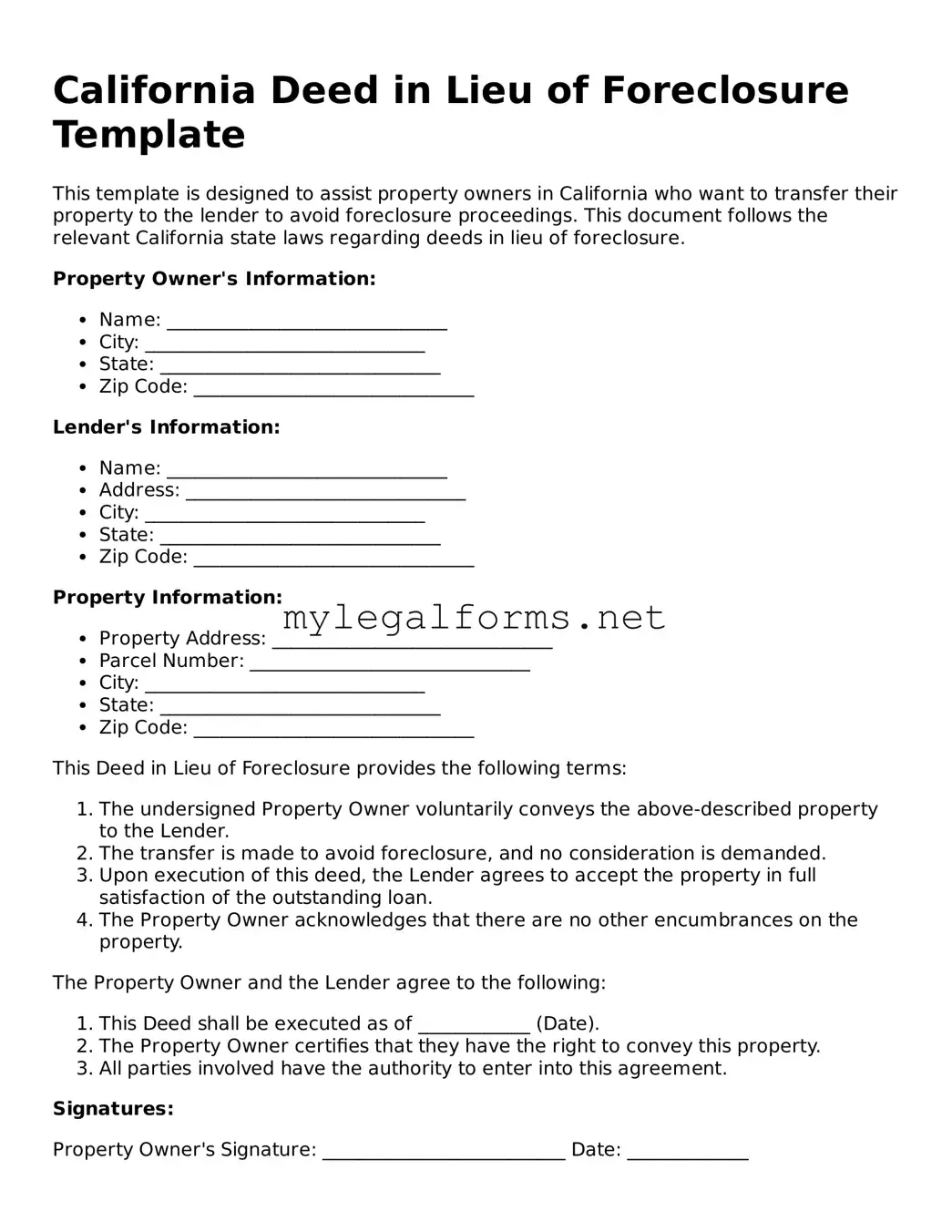Filling out a California Deed in Lieu of Foreclosure form can be a complex process, and many individuals make mistakes that can complicate their situation. One common error is failing to provide accurate property information. It is essential to ensure that the property address and legal description are correct. An inaccurate description can lead to delays or even rejection of the deed.
Another frequent mistake is not including all necessary parties in the document. If there are co-owners or other interested parties, their signatures are often required. Omitting a necessary signature can invalidate the deed and prolong the foreclosure process.
Many individuals also overlook the importance of ensuring that the deed is notarized. A notary public must witness the signing of the document to make it legally binding. Without this step, the deed may not be recognized by the lender or the court.
In addition, people often fail to understand the implications of the deed. They may not realize that signing a deed in lieu of foreclosure can affect their credit score and future borrowing capabilities. It is crucial to fully comprehend the consequences before proceeding.
Another common mistake is neglecting to communicate with the lender throughout the process. Keeping the lender informed can help facilitate a smoother transaction. A lack of communication may result in misunderstandings or complications that could have been avoided.
Some individuals also forget to review their mortgage documents thoroughly. Understanding the terms of the mortgage can reveal whether a deed in lieu of foreclosure is a viable option. Ignoring this step can lead to unexpected challenges.
Additionally, people may not seek legal advice before completing the form. Consulting with a legal professional can provide valuable insights and help avoid pitfalls. Many individuals underestimate the benefits of having expert guidance during this process.
Another mistake is not considering tax implications. A deed in lieu of foreclosure can have tax consequences, and individuals should be aware of potential liabilities. Failing to account for these can lead to financial surprises later on.
Lastly, individuals often rush through the process, leading to careless errors. Taking the time to carefully fill out the form and double-check all information is vital. A thoughtful approach can prevent unnecessary complications and ensure a smoother transition.
